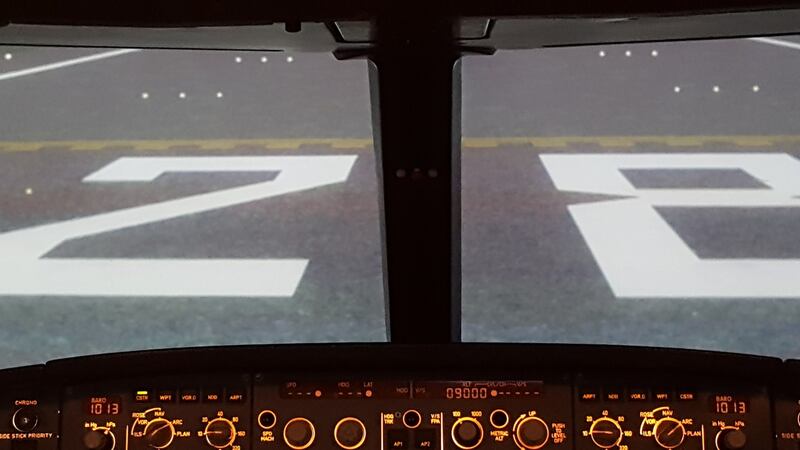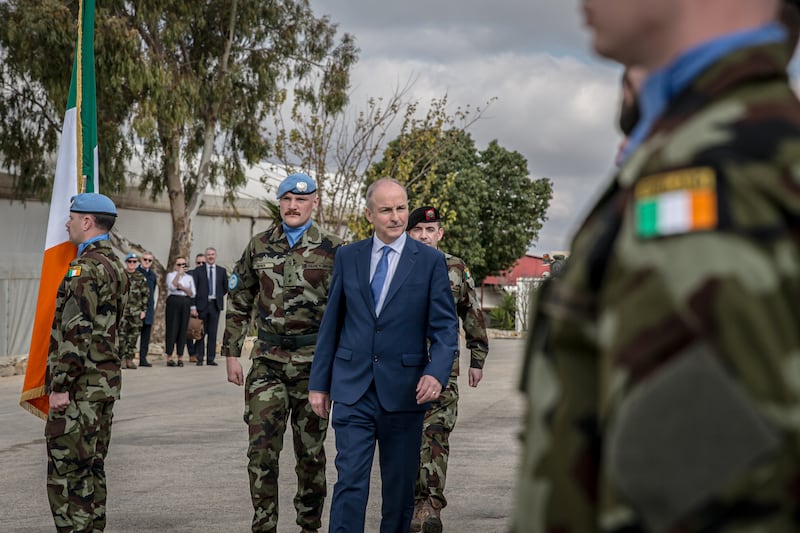"Up, up and away," I feel like singing as I take off in control of an Aer Lingus Airbus A320. I was flying a plane from Manchester to Dublin, and successfully landed the aircraft on first go. Not bad for a novice pilot, I thought to myself.
I have flown as a passenger hundreds of times and have often had a peek inside the cockpit, but this was my first time to be in charge. And it felt great.
Of course, it was not an actual flight, but a flight in the airline’s simulator it uses to train pilots. This box of electronic wonder mimics a cockpit, complete with switches, knobs, buttons, lights, and controls. It is on hydraulic legs and moves exactly like an aircraft in flight. The environment can be changed at a flick of a switch, and you can suddenly be plunged into darkness and the worst storm you can ever imagine, or the scariest turbulence.
It is all very realistic, with lights and sounds, and my own screams of panic in my head. Taking instructions from the first officer, I settle into the co-pilot seat, adjusting it so I can see all the things I’m meant to keep an eye on. I’m scared stiff of touching anything – the sheer number of switches, dials, and knobs is mindblowing.
Aoife Duff, who has been flying for seven years, gives me some pointers about how to keep the aircraft level and takes me through the paces for my first flight. We go through the protocol for controlling the aircraft.
You use the control very gently to move the plane up and down. At first it is intimidating – every nudge produces an immediate reaction in the movements of the plane – hours spent playing video games would definitely be an advantage.
Squeezing the joystick carefully is my first task. I put my feet on the pedals below and feel the rudder moving.
I gently lift up the nose to head upwards, using the joystick, trying to keep my eye on the horizon, the speed counter going up, 100, 200, 300 airmiles. We are on our way, and fields zip by below us, the Irish Sea twinkling in the distance. The feeling of responsibility is huge as I realise I have the fate of all souls on board in my hands.
After a little “flying time”, I begin to feel confident; this is no bother at all. I’m sure I could land the beast on a sixpence.
The pilot gives me instructions to keep within the lines on the screen as she passes back control to me. Every time the control is passed between the pilots, you have to say clearly that you are passing it back – good communications skills are vital.
In no time, Dublin Airport looms into view. I begin to wonder how on earth pilots can put a plane down in the right place.
I get an approach route and in the distance I can just make out the runway – What? I’ve to land this thing on that tiny strip of tarmac?

I line up the joystick on the screen with two yellow lines. I have to keep my craft within within those lines and land it in a yellow box. We descend right on line, the ground rising up fast to meet us. Touchdown. I give myself a round of applause on a job well done.
Recruitment
My jaunt in the simulator was part of Aer Lingus’s drive to recruit 100 apprentice pilots to add to the airline’s 600 pilots and 1,900 cabin crew.
The successful candidates must undergo an intensive 14-month training programme. The recruits of 2018 will begin their aviation career as a first officer in 2020 on Aer Lingus’s brand new Airbus A320 and A321neo long-range aircraft. The training programme will cost about €200,000 per pilot.
Applicants are invited to apply online and the closing date is 5pm, Sunday, May 13th, 2018. aerlingus.com/careers















